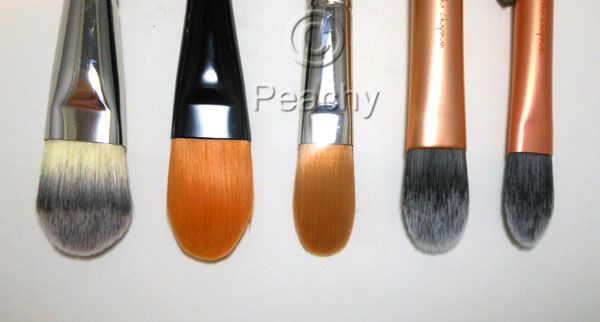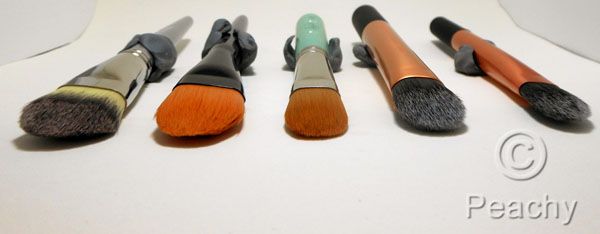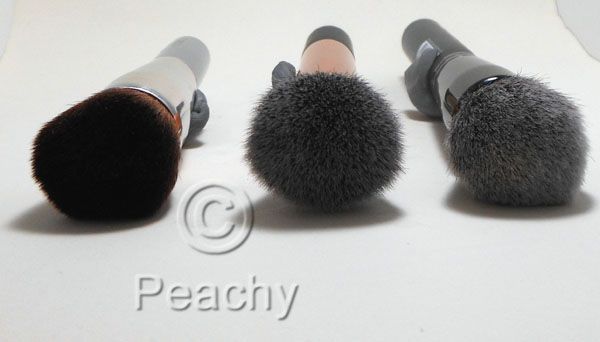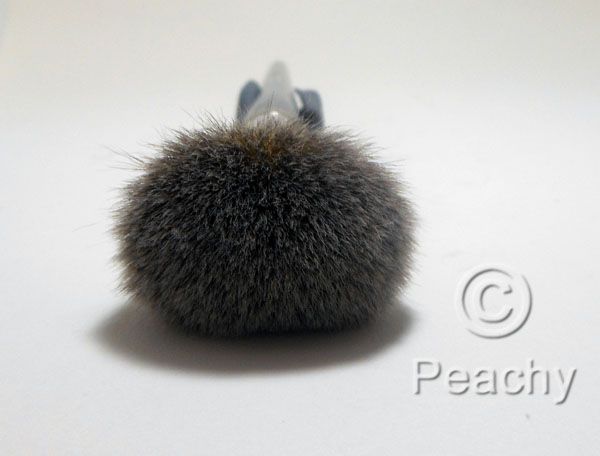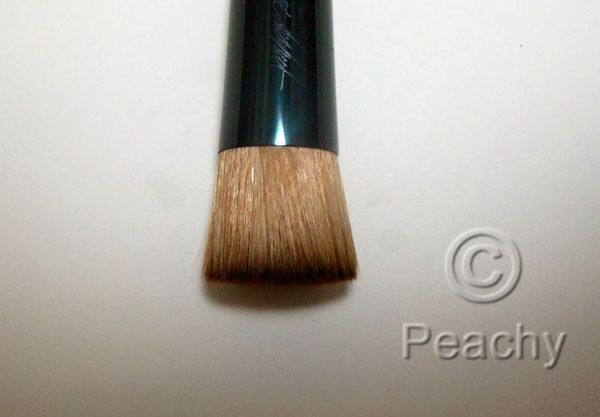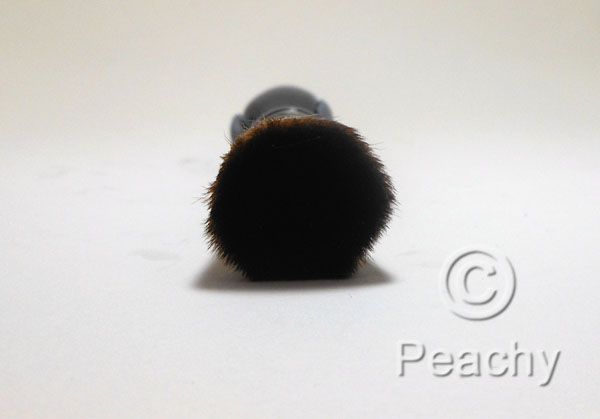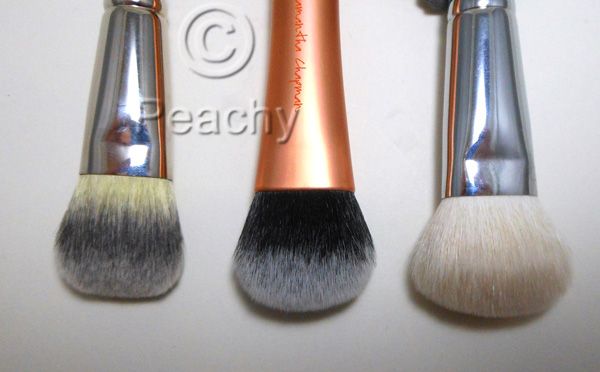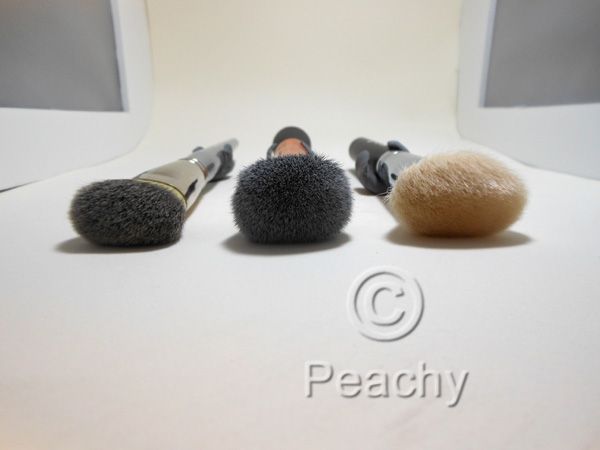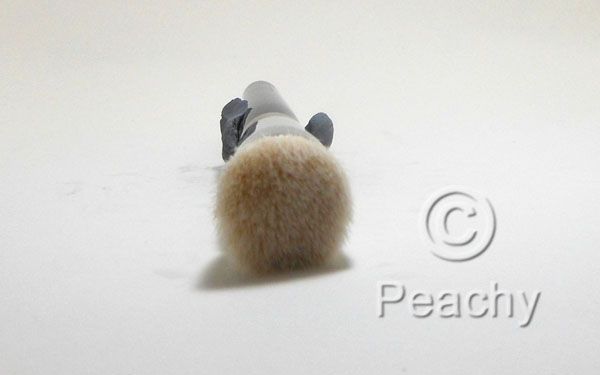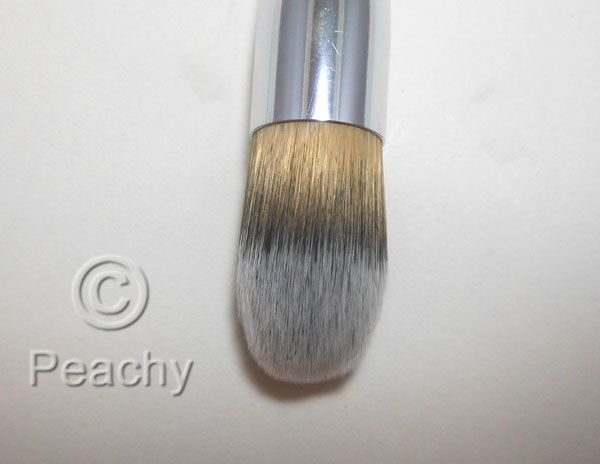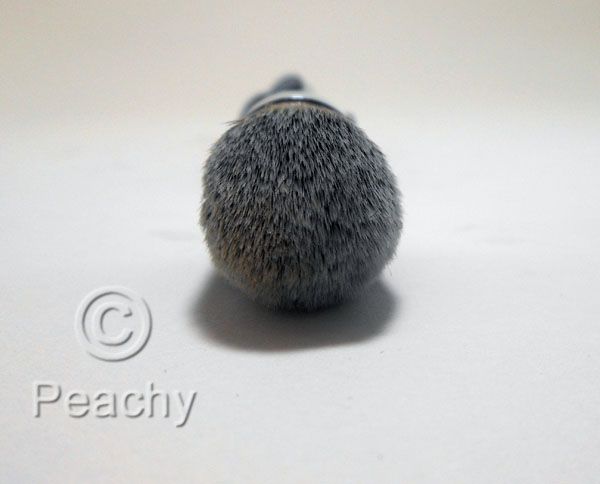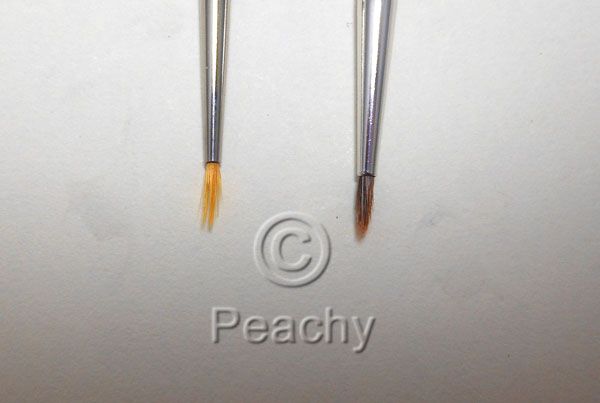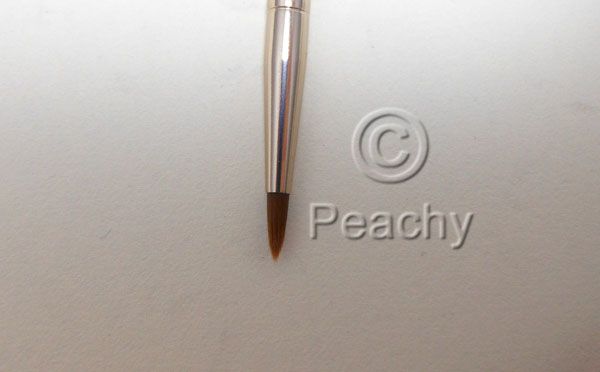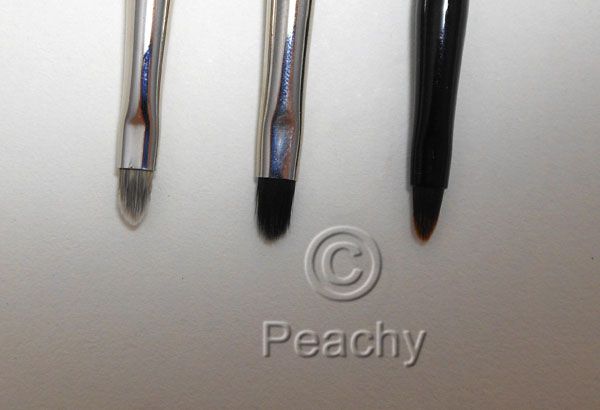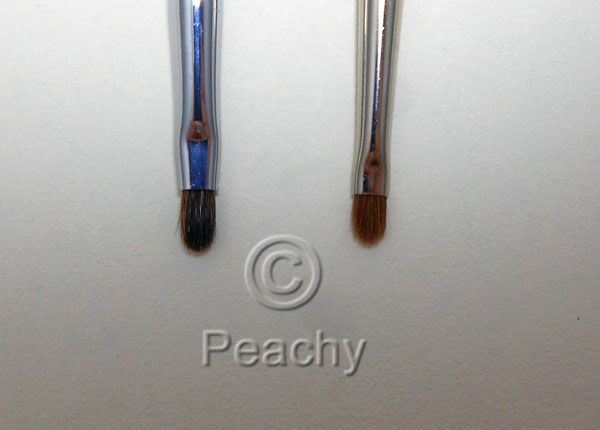Concealer Brushes are used to apply concealer. I'm making this real difficult, I know. This post features brushes for applying undereye concealer, blemish concealer, concealing redness around the nose, or anything else you might want to hide.
Medium Concealer Brushes
The most classic of concealer brush, the medium concealer brush, here a Paula Dorf Camouflage brush, Sephora Classic Concealer, and Sephora Platinum concealer, resembles a flat eye shader brush, but is usually synthetic, as these three are. Good for basic concealing on blemishes, under the eye, or around the nose. I think they work best for redness or under the eyes, as I prefer a more precision brush for blemishes. I like these best with cream concealers, as I prefer smaller brushes with harder concealers (like Laura Mercier Secret Camouflage) or liquid concealers (like Make Up For Ever Full Cover), but they are nice to blend after those are applied.
The medium concealer brush is also useful as an eyeshadow brush (no surprise, since it so resembles an flat shader). They're nice for applying cream eyeshadow (which reminds me I'd like to do a post on cream eyeshadow....), and can be really useful for applying those pressed loose powder products like Armani Eyes to Kill Intense and L'Oreal Infallible, since they're usually stiffer than natural bristle brushes.
Large Concealer Brushes
The large concealer brush is a larger version of the medium; these are Hourglass Large Concealer and Cover FX concealer brush both synthetic. They work well for applying foundation as concealer, such as a cream or stick foundation. They are also good for applying concealer over redness around the nose or on the cheeks, highlighting cheekbones or that triangle highlight everyone associates with Kim Kardashian even though Kevyn Aucoin was doing it on celebrities and models 20 years ago. I also use them often for blending blemish concealer over my chin, if I'm using a more emollient concealer, like Kevyn Aucoin Sensual Skin Enhancer.
Small Concealer Brushes
The smallest of the flat synthetic concealer brushes, these are by Japonesque and Real Techniques. These are good for applying concealer to blemishes, especially the big swollen kind. They also make great lip brushes, which is probably what I use them for most. They can also be used for detail work with cream eyeshadows.
Fluffy Concealer Brushes
These are a Real Techniques Deluxe crease brush (also featured in the blending brush breakdown), and a Sephora Platinum Airbrush Concealer brush. A lot of people also use eye shadow blending brushes, like oval blending brushes (MAC 217 and its dupes) or round crease brushes (MAC 224 et al.) similarly. These are good for applying concealer under the eyes, and blending concealer over large areas of blemishes. I like to use these with creamy or liquidy concealers, and I find them completely useless with hard concealers (like LM SC, mentioned previously). They are great for blending, all formulations, though, and I like to use the Sephora like a mini buffing brush to apply something like KA SSE as a spot foundation.
I think these are really useful brushes, as they're like tiny foundation buffing brushes, so I think they're easier to use and require less skill to apply and blend concealer.
Long Concealer Brush
This Bobbi Brown Concealer brush (synthetic), is meant for applying undereye concealer, and I tend to use it exactly how Bobbi Brown intended (with her creamy concealer/corrector). It's longer and thinner than the flat concealer brushes, and I can't imagine it being good for blemishes, though I am quite fond of it for creamy undereye concealer. It doesn't blend well, though, so it requires the use of a fluffier brush or fingers to blend the edges.
Pinpoint Concealer Brush
The pinpoint concealer brush, this one by Kevyn Aucoin, is a must for precision blemish concealing. I should say, this sort of shape is essential, but you may notice it's resemblence to gel liner brushes. In fact, you may notice Lisa Eldridge, the queen of pinpoint concealing, using liner brushes to do so. I'll include liner brushes in this idea, so don't think you need to buy this brush (I do have to make a massive recommendation for this brush though; it is truly phenomenal. It really glides over the skin, as it's very dense and just the perfect stiffness. I have honestly not used another brush to conceal zits since I purchased it).
The tiny little point you see in this photo really allows the tiniest amount of product in exactly the place you need it, which is why this type of brush is so amazing for pimple coverage. It works with all styles of concealer, and is especially good for really pigmented concealers, be they waxy or emollient. It can deposit such precise amounts and placement, blending is barely necessary, though, especially if your concealer is not a perfect match, you may need to scribble a bit around the edges, and use a blending brush. I often just press or pat the product into the skin with my fingers to blend, though.
Point Concealer Brush
Another great brush for concealing blemishes, it's wider and longer than the pinpoint concealer brush, but still tapers to a thin point. This Laura Mercier Secret Camouflage brush is intended for use with her Secret Camouflage, and it really does work best with hard concealers like that.
Pointed Concealer Brush
This is the concealer half of the Stila One Step Complexion Brush, this is a less fluffy version of the fluffy concealer brush. It's good for under the eyes, around the contours of the nose, and for blending concealer on blemishes. The tapered point allows more control, but less blending than the fluffier brushes.
Square Concealer Brushes
This is an old Urban Decay Concealer Brush from an early brush line and a NYX small concealer brush. The narrower square brush is good for spot concealer on blemishes, and the wider one is good for a dense application in a small area. Not an essential brush, though the Urban Decay brush was one of my very first brushes over a decade ago and I still sometimes use it to stipple concealer on a zit, especially one that has dried out a bit (nicer to say that than "crusty and gross"), though it has been long discontinued.
Pros and Cons
Pros: You can apply concealer with fingers, but it's still one of the first non-powder brushes you'll want. A concealer brush provides more accuracy, better blending, and less wasted product, than using fingers. Do you need every one of these styles? Unless you're obsessed like I am, no. The most useful of these are the pinpoint, point, and fluffy concealer brushes, and with either tiny brush and the bigger fluffy one, you'd be able to conceal anything, whether it's a blemish, undereye circles, or redness, and they'll work with pretty much any formula concealer you use (though with drier consistencies, the fluffy concealer brush would be just a blending brush).
Cons: This is one of those situations where the most classic brush is one of the least useful. Though the classic brushes are still useful, for under the eyes or blending, it's not likely to be essential. In fact, they're probably better as a laydown brush for cream or loose powder than for concealer.
The brushes featured in this post are: Paula Dorf Camouflage Brush (from Travel Set), I think this may be discontinued, as I think the "Total Camouflage" brush currently on the website seems bigger, Sephora Classic Concealer 46, Sephora Platinum Concealer Brush 45 (The entire Platinum line was discontinued and replaced with the Pro line, this one appears to have changed shape in the switchover), Cover FX Concealer Brush, Hourglass No. 8 Large Concealer Brush, Japonesque Concealer Brush from Touch Up Tube, Real Techniques Detail Brush (from Core Collection), Real Techniques Deluxe Crease Brush (from Starter Set), Sephora Platinum Airbrush Concealer 57 (This is carried over into Pro line), Bobbi Brown Concealer Brush, Kevyn Aucoin Concealer Brush, Laura Mercier Secret Camouflage Brush, Stila One Step Complexion Brush 33, Urban Decay Concealer Brush, long, long ago discontinued, NYX small concealer brush. All were purchased and I received no compensation for featuring them.



















